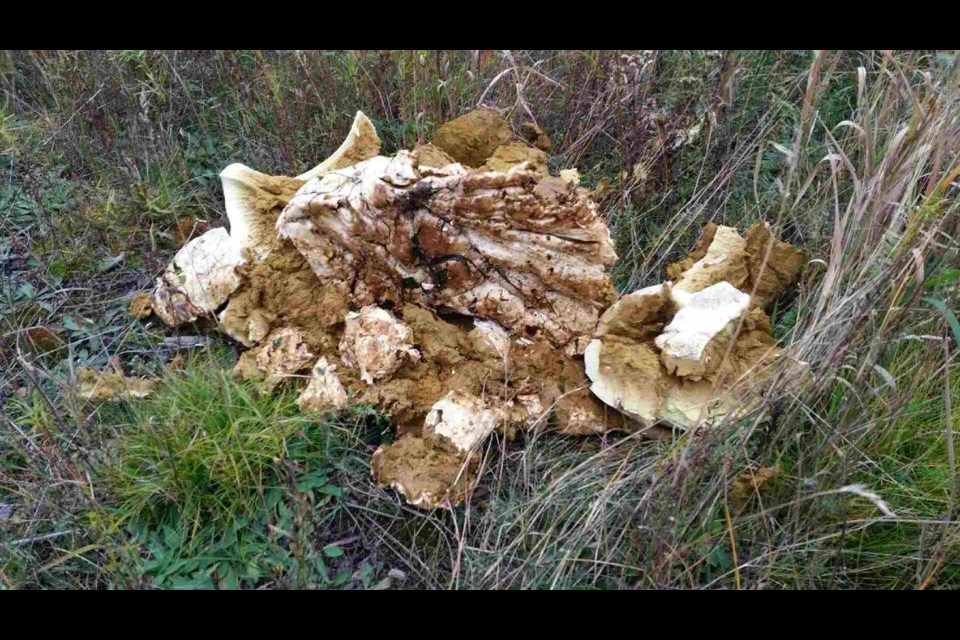THUNDER BAY – There’s no arguing the puffball mushroom Adrian Karasewicz plucked from the Kaministiquia River’s shore was anything less than enormous.
It just wasn’t the largest discovered in the recorded history of the world.
Karasewicz had kept his eye on the mushroom as it grew through the summer near a secret fishing hole. By the time he picked it, it measured 2.05 metres (81 inches) in circumference.
That appeared to be a world record at first glance. Guinness World Records has no specific entry for the largest puffball mushroom but World Record Academy listed its record at 1.65 metres (66.5 inches).
Seeking academic witness to what he believed to be a world record, Karasewicz loaded the 23.5-kilogram (52-pound) mushroom in the back of his truck and drove it to Lakehead University.
A group of professors greeted him in the parking lot and that’s where his hopes were dashed.
“It certainly is big, there’s no question about that but if you look at mushroom books where giant puffballs are illustrated, there are ones that are bigger than that,” said Leonard Huchison, an associate professor in Lakehead University’s Natural Resources Management department.
“It does reach its maximum size in that specimen they brought in but I seriously doubt it’s a world record.”
Guinness confirmed Huchinson’s suspicions in correspondence with TB Newswatch over the days that followed. While it’s true the organization has no specific category dedicated to the largest puffball mushroom, its record for “largest edible fungi” happens to be a giant puffball.
That title belongs to Jean-Guy Richard of Montreal who, in 1987, discovered a puffball mushroom measuring 2.64 metres (8 ft. 8 inches) in circumference that weighed 22kg (48lbs, 8oz).
When Huchison broke open the mushroom, it had already begun going to spore, making it inedible. He advised Karasewicz to spread the spores so they would germinate and its genes would be passed on.
The next morning, Karasewicz set out under rain and fog to a spot he’s keeping secret where he will monitor the spores’ growth next year.
“I’m not heartbroken about it,” Karasewicz said.
“It would have been cool if that’s what it was (a record) but the kind of excitement it brought, it was gratifying.”
